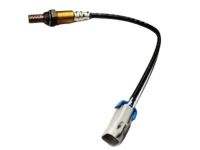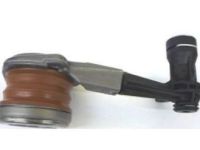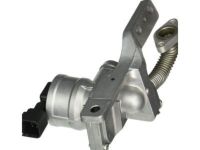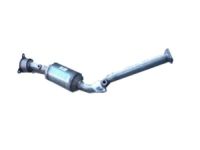
Why choose GMPartsGiant
- Large Inventory
The best site to buy Saturn Ion genuine parts for years has been GMPartsGiant.com. We're the best online parts and accessory store for your Saturn Ion. GMPartsGiant.com offers a large parts and accessory inventory to cover all your vehicle's repairs. Feel free to browse through our genuine Saturn Ion parts and accessory catalog to find all your vehicle's needs.
- Fast Shipping Times
All of our Saturn Ion auto parts and accessories are expedited directly from verified dealers and backed by the manufacturer's warranty. Our experienced team ensures the orders are packed to provide quick transit times. The majority of the orders are shipped out within a couple of business days to get the parts out to you as fast as possible.
- Low Prices
Our low prices say it all. You can rest assured that you will always receive unbeatable prices on OEM Saturn Ion parts. Our giant inventory is beyond compare and has everything you need at an extraordinary value not found anywhere else. Whether you're restoring an old vehicle or upgrading the performance of your vehicle you can count on the quality of our products without hurting your bank account.
Popular Genuine Saturn Ion Parts
- Engine Parts View More >
- Front Suspension, Steering Parts View More >
- Fuel System, Exhaust, Emission System Parts View More >
- Brakes Parts View More >
- Transmission - Automatic Parts View More >
- Frames, Springs, Shocks, Bumpers Parts View More >
- Cooling System, Grille, Oil System Parts View More >
- Interior Trim, Front Seat Trim, Seat Belts Parts View More >
Shop Genuine Saturn Ion Parts with GMPartsGiant.com
The Saturn Ion was a compact car produced by Saturn from 2003 to 2007, resting on GM's Delta platform. Offered in three trim levels, it featured a variety of amenities, with base models sporting cloth seats, manual door locks, and 14-inch wheels, while higher trims provided power windows, keyless entry, and upgraded wheels. Unique to the Ion, its instruments were located atop the central console instead of behind the steering wheel. The car came with either a Getrag F23 manual transmission or an Aisin AF23 automatic transmission, which incorporated a quick-shift function to boost acceleration and fuel economy. The 2007 Ion was notable for its improved 2.2-liter Ecotec engine and enhanced styling, including black leather seats in the Quad Coupe. After 2007, production ceased and the Saturn lineup welcomed the Saturn Astra hatchback. From 2004 to 2007, the sporty Ion Red Line variant was also available, featuring most standard Ion components plus a power-boosting Stage 2 kit for models already equipped with the Stage 1 kit. Despite its early reputation as a reliable and easy-to-maintain vehicle, the Ion faced criticism for its noisy engine, hard interior plastics, and poor electric power steering, issues Saturn attempted to rectify in later models.
Despite being manufactured by General Motors, the Saturn Ion is not immune to wear and tear under harsh conditions, with some common issues being transmission failure and engine problems. According to car repair statistics from CarComplaints.com, transmission failure tops the list of Saturn Ion problems, with drivers reporting difficulty in shifting gears, clutch slippage, grinding noises, and even complete loss of four-wheel or all-wheel drive. If your Ion exhibits these symptoms, check the shift cable, transfer case seal, and clutch disc. Engine issues are another concern, particularly if your key gets stuck in the ignition, the engine won't shut off, or you notice a reduction in engine performance, backfiring, misfiring, lower fuel efficiency, or sudden stalling. Also, watch out for a lit Check Engine Light, and ensure the ignition coil, spark plug, air filter, ignition switch, and key cylinder are functioning well. Routine maintenance is crucial, with a special focus on vulnerable parts such as the windshield wiper which cleans vision blocks under harsh conditions like heavy rain or sandstorms. Other components like fog lights, headlights, and seat belts also require regular checks for your safety.
In terms of quality, OEM parts are the wise choice for Saturn owners who want to keep their vehicles at peak performance. They are manufactured to follow official strict factory specifications and are made in world-class facilities. They undergo rigorous tests to ensure that they are durable and safe to use. When it comes to choosing the right parts, like Front End Sheet Metal, Heater, Body Moldings, Sheet Metal, Rear Compartment Hardware, Roof Hardware for your vehicle, the solution is simple: shop from our wide selection of genuine Saturn Ion parts, such as Transmission - Manual at the most competitive prices available on GMPartsGiant.com. We prioritize your convenience, 100% satisfaction, and peace of mind by offering a user-friendly catalog, manufacturer-warranted OEM Saturn Ion parts, a hassle-free return policy, and swift delivery service.
Saturn Ion Parts Questions & Answers
- Q: What is the purpose and location of oxygen sensors on Saturn ION?A: There is a galvanic battery called oxygen sensor that gives out a small voltage based on the amount of oxygen in the exhaust gases. A voltage change from stoichiometric 14.7:1 is needed by the catalyst for proper function. Motor vehicles whose engines are controlled by On-Board Diagnostics II (OBD-II) can confirm if the oxygen sensor and PCM feedback circuit are working correctly. Oxygen content level in the exhaust gas before and after catalytic converter can be used to determine it. The sensors upstream and downstream have heaters making them warm up quickly. It should be noted, though, that these sensors are very fragile and should be handled with extreme care as they can easily break when being serviced or replaced. In case of sensor replacement, it is important to start an engine within a short period to help remove old ones without damaging them further during removals. An upstream oxygen sensor can be screwed off with an oxygen socket and it lies on left side of the exhaust manifold while downstream one unscrews likewise using an oxygen socket located behind a catalytic converter. After removing sensors, any old sensor must be reused by applying anti-seize compound to ensure reinstallation of new sensors with already coated threads otherwise might also require application of anti-seize compounds as well.
- Q: How to remove the Clutch Slave Cylinder on Saturn ION?A: To remove the clutch slave cylinder, start by disconnecting the quick-connect hydraulic line fitting. Then, remove the transaxle and the fasteners securing the clutch slave cylinder to the transaxle. Slide the clutch slave cylinder assembly off the transaxle input shaft. For installation, lubricate the inside diameter of the bearing with high-temperature grease. Apply a thread-locking compound to the clutch slave cylinder mounting fasteners and tighten them to the specified torque. Install the transaxle and connect the hydraulic fitting. Check the fluid level in the brake fluid reservoir and add brake fluid conforming to DOT 3 specifications if needed. Finally, bleed the system.
- Q: What is the role of the Secondary Air Injection Check Valve and Secondary Air Injection Pump in reducing emissions during cold starts on Saturn ION?A: The Secondary Air Injection system reduces emissions during cold starts. It includes an AIR pump, shut-off valve, and pressure sensor. Filtered air goes from the engine's air filter housing to the pump, then to the shut-off/pressure-sensor assembly on the exhaust manifold. A scan tool is recommended for a thorough inspection. The AIR solenoid/shut-off/pressure sensor should be replaced as a complete assembly.
- Q: How to remove and install a catalytic converter on Saturn ION?A: To remove the catalytic converter, open the hood and spray the upper exhaust pipe-to-exhaust manifold flange nuts with penetrating oil. Let it sit and remove the nuts. Raise the vehicle and support it on jackstands. Disconnect the downstream oxygen sensor and, if applicable, the upstream sensor if it is installed in the exhaust pipe rather than the manifold. Remove the two bolts/nuts that attach the exhaust pipe behind the catalytic converter to the resonator pipe flange. Finally, remove the catalytic converter and discard the old flange gaskets.




















































